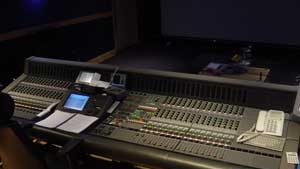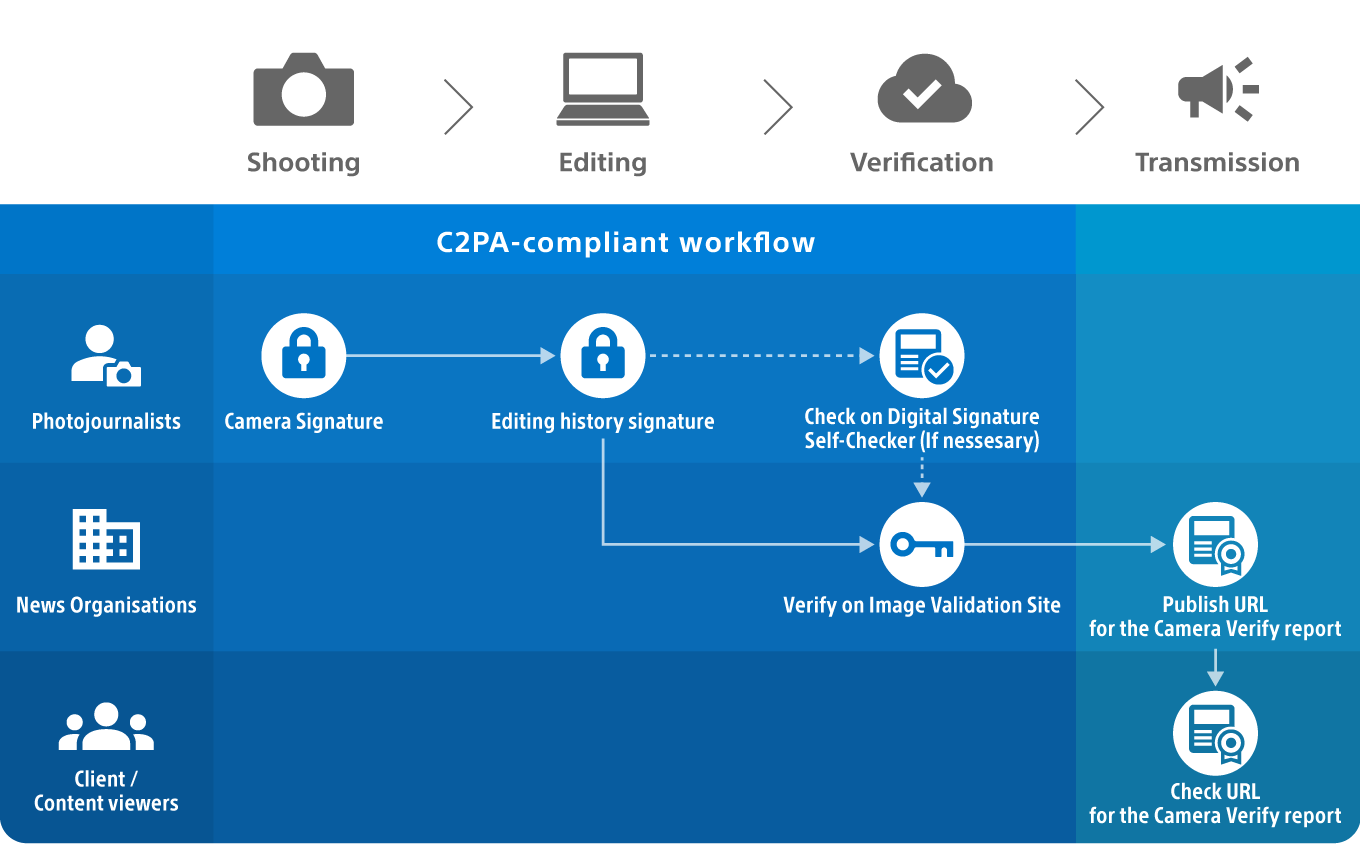Audio follows multiformat video
It's a fact: When the audio is better, viewers believe that the picture is better. Be it HD or SD, live sport, long-form drama or DVD mastering, the demand for high-quality audio to accompany today's pristine images is here. As a result, production facilities are finding their clients demand as much from the audio booths as the video edit suite.

Studio 2 at LipSync Post features an AMS Neve digital film console with an integral AudioFile SC 32 digital audio workstation. Outboard equipment includes a TC Electronic M6000 5.1 reverb, DK-Audio MSD600 Jelly-Fish metering and Digidesign Pro Tools HD editor.
Today's requirement for high-quality audio lies in the consumers expectation not only for clean audio with properly mixed dialog, but also a low-frequency effects channel and Surround sound sufficient to rattle the windows if necessary. Especially with action scenes, sound makes the image believable.
Three factors have contributed to the change. First, Dolby Digital, now a staple in cinema, has made a major difference to the technical quality that can be produced. Not only can the resulting audio be more realistic, if needed, the audio imagery can be as complex as any special effect. Sound has become an integrated element in the total presentation of the scene.
Second, digital television is finally taking off. In a sense, DTV is for sound what color TV was for video graphics and effects — a whole new creative scope. Consumers now want their home experience to rival that of the theater. This means that producers may place as much emphasis on the audio presentation as with the video. Multiple tracks of audio, often requiring automated mixers, are the norm as audio engineers work side-by-side with directors to seamlessly blend sound with image to create those theater-like atmospheres for the home.
Fortunately, the overall audio quality of today's TV sets is quite good. Add to this that many receivers have integrated Dolby Pro Logic or DTS decoders, and you've created an environment where even the film or show's directors can be satisfied with the presentation.
The third factor is the DVD. To use another parallel, DVD has done for pictures what CDs did for hi-fi sound. DVD's use of Dolby and DTS Surround sound imagery has probably done more to sell speakers and sub woofers than anything since the advent of stereo. Viewers expect the DVD movie they rent or buy to sound as good as it did in the theater. They may be willing to accept less quality in the image because they don't expect a 30m screen. However, they still want the audio to sound just like it does in the theater.
The professional video industry's #1 source for news, trends and product and tech information. Sign up below.
Audio impact
What does this trend imply for audio engineering? According to Steve Haynes, head of sound for Lipsync Post in London's SoHo, there is a temptation to go overboard. What that availability means to dubbing mixers is that audio engineers can use a greater dynamic range and a greater frequency range. People can do much more in a creative way with sound.
But there is a legacy issue. There are plenty of people watching TV on older, mono receivers or on 12-inch sets in the kitchen. Lipsync Post keeps a watchful eye on making sure that whatever it does is compatible with the mono listener.
In short, it's a question of not being too clever. So for example, in a terrestrial television drama, if you are going to put anything in the rear and it's an important part of the plot, you can always duplicate that important piece of sound, delay it slightly by only a frame and place it in the center channel. As a result, the people watching in Surround will hear it first, and they will be drawn to the rear speaker for that piece of sound, but the delay will also put it in the front so that it does not disappear in mono. The delay has to be enough not to phase and cancel out. Otherwise, you would have two signals, one signal out of phase and one in phase and if they are equal levels, that is, equal and opposite, they cancel out. So the delay avoids the problem. It's also a good idea to keep the delayed front signal not as loud as the rear.
Steve Haynes, head of sound at LipSync Post, at work in Studio 2. The studio is equipped with Dolby 5.1 EX Surround monitoring and JBL loudspeakers.
An example is from the UK police drama “A Touch of Frost.” The detective followed a criminal into an old factory and called for backup. The police arrived in a helicopter. Lipsync Post ran the helicopter around — left into the Surround, back around into the right, across the front and it just circled. In mono, that effect would disappear when it went into Surround, but it didn't matter because the sound kind of comes and goes in front. In Surround, you get the full effect and get excited about having a helicopter going around and around in your living room.
Full service
Lipsync Post is a full-service facility, offering a range of assignments for its four audio studios. The company has a team of producers that does commercials, including both TV and radio spots. It also produces cinema trailers, as well as TV trailers for theatricals. In addition, the facility produces all types of television programming, from documentaries to long-form drama, for both the BBC and ITV.
HD considerations
Like other SoHo post facilities, the company has become involved with HD production. It recently did a filmed production of Cole Porter's “Kiss Me Kate” shot on a London stage. It was post-produced in HD for DVD and American television. The American version included HD video and Dolby E in order to get 5.1 onto the tape.
For the dubbing, the facility placed the audience in Surround, even though there were close-ups. The reverb in the music was put into the Surround sound. It did a film-type dub in which it did a Folley track for the singing and dialog, plus an atmosphere for scenes that took place outside. (The musical is done as a musical-within-a-musical, with segments meant to be outdoors.) Putting the atmospheres into Surround gave the audience the feeling for having moved location to the car park of the theater.
Dubbing with Surround requires more planning with the producer and director. HD is not only a better picture, but better sound, even for a given soundtrack. Having had experience with HD and film, the facility sees little difference in the dubbing process when the HD video is to be shown on a projector in a cinema context. It believes that HD will be the next big leap in television.
However, like Surround sound, HDTV audio will have to be compatible with non-HD reception and playback. Unlike the USA, there is no current roadmap to HD in Britain and most of the other DVB countries. This doesn't mean that Europe's top facilities can ignore the demands for new audio production tools. For example, SoHo facilities are already working on productions that are bound for the USA, Australia and Japan, where HD imagery is growing.
Keep it natural
Lipsync Post uses AMS Neve DFC mixers for dubbing Surround sound. According to the company, the desk has superior width control on the channels, which makes the output compatible with mono. When you make the channels really wide and play them back through a Dolby Pro Logic decoder, they wrap around you, creating a nice atmosphere.
Studio 2 employs TASCAM DA-88, DA-98 and DA-98HR digital tape multi-tracks, as well as TASCAM MX2424 and AKAI DD8 digital disk multitracks.
This philosophy applies to live broadcasts as well. Surround sound works for both sport and game shows to involve the viewer in the event. In sport, if a lot of the crowd is captured in the Surround, it is much more involving for the viewer.
The pitfalls
When mixing, the first key is to control loudness. The chief complaint from the television viewers is likely to be that the commercials are too loud. While Dolby Digital provides tools to automatically control the dialog norm loudness, most current TV programs don't yet have that capability.
Also, the dubbing mixer can't control the environment in which a program is being watched. Because any movie or show's plot is communicated primarily by dialog, the mixer must be careful to make sure the center (mono) channel never gets lost in the ambiance.
Sometimes clients will want the audio levels pumped or boosted to make the commercial sound louder than the typical program. Audio engineers know to avoid that pressure as every broadcast chain has limiters and gain controllers, which will attempt to maintain a constant loudness. Feed them too much level, and they'll simply clamp down and then the overall imagery has been ruined.
Besides, attempting to make commercials louder may be self-defeating, because the viewer can easily tap the mute button on the remote. Then the client's whole message is lost. Commercials do not have to be loud to be effective; they have to be at the same level as everything else.
